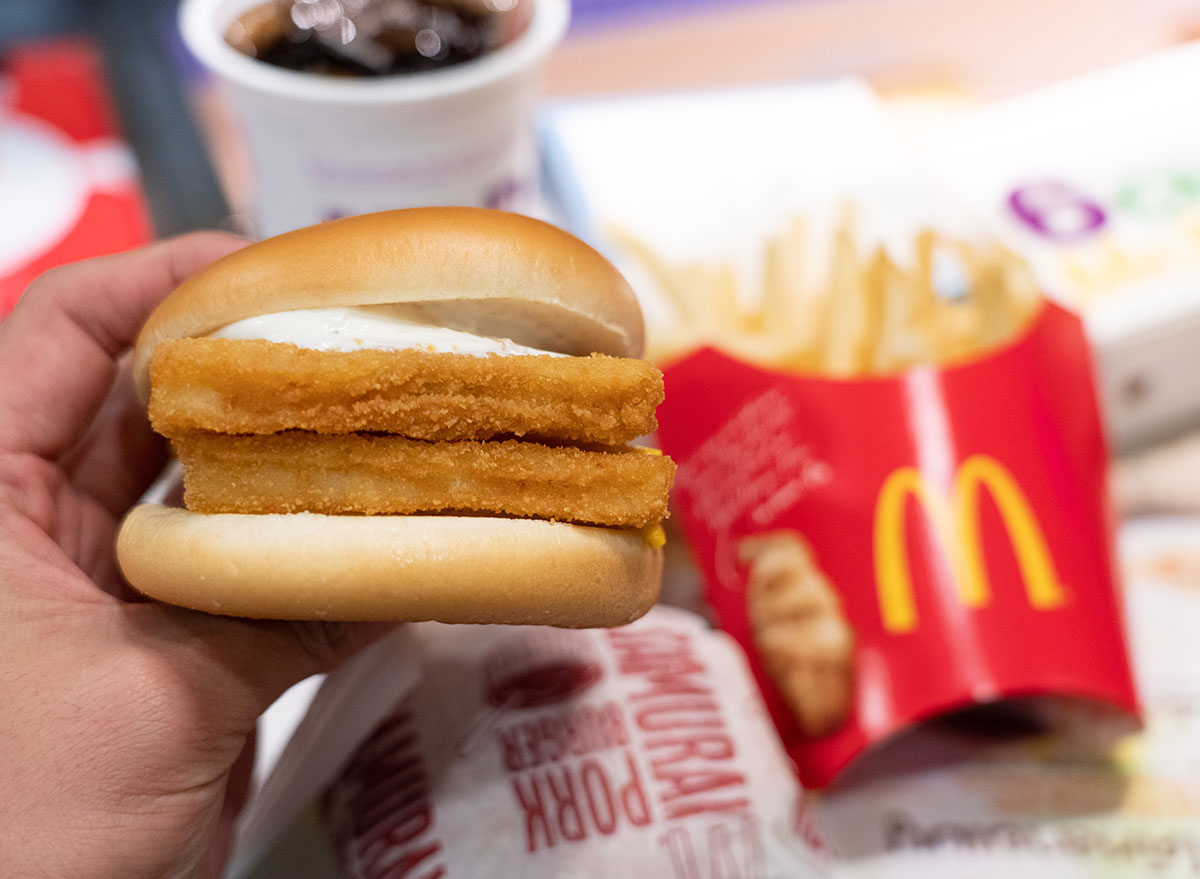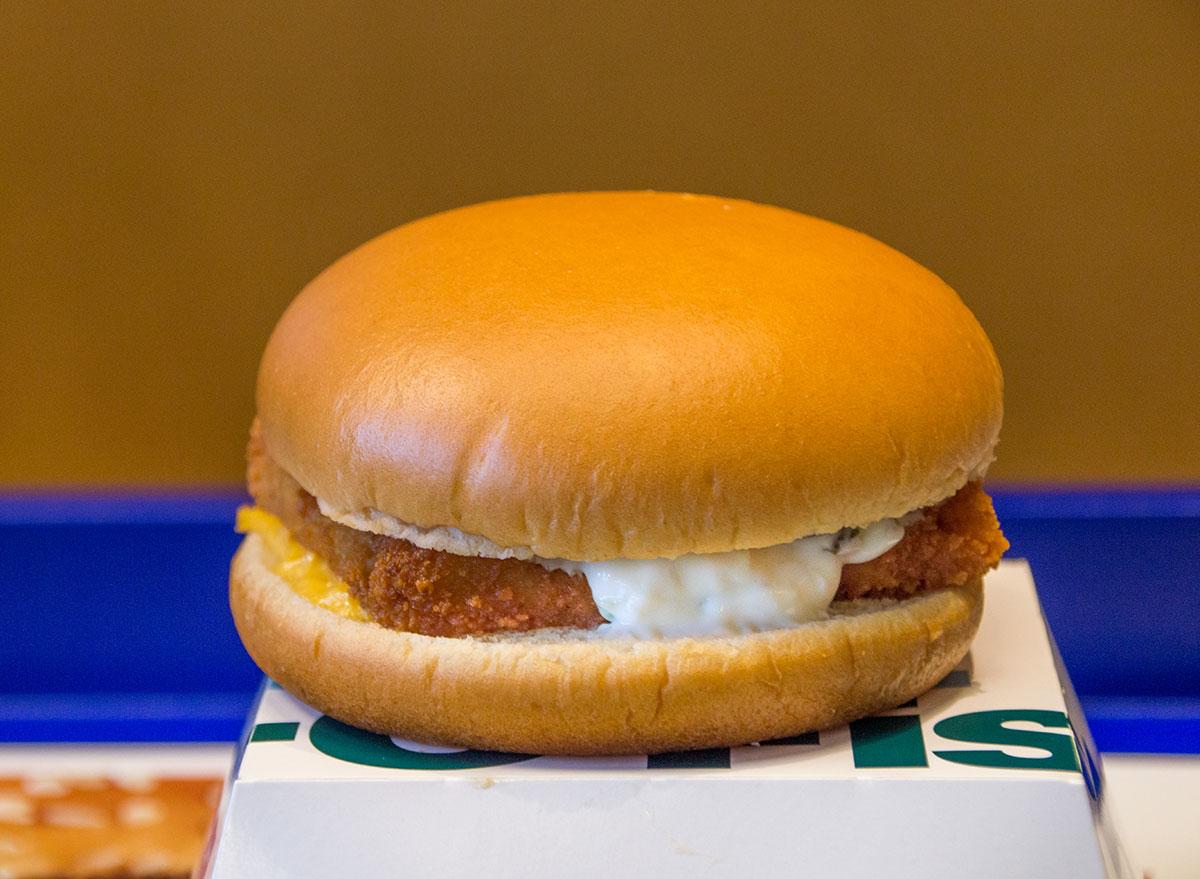The Real Reason Why McDonald's Sells Filet-O-Fish

McDonald's is best known for Big Macs and French fries, so it may be surprising to learn that the Filet-O-Fish Sandwich actually predates America's most iconic burger—and, in fact, inspired it. But what's the deal with the Filet-O-Fish sandwich, anyway? The story of how it came about and why it persists nearly 60 years later has a surprising source: Catholic tradition.
How did the Filet-O-Fish sandwich make its way on the McDonald's menu?
The history of the strange but satisfying sandwich can be traced back to the early days of McDonald's. Before it was a global behemoth, McDonald's was an upstart, like any other business. After opening their first location in 1948 in San Bernadino, CA, brothers Dick and Mac McDonald began to franchise their concept with the help of businessman (and later sole owner of the Mickey D's company) Ray Kroc and slowly expanded. So when Lou Groen—then president of the Cincinnati Restaurant Association—opened up the first McDonald's franchise in the Cincinnati area in 1959, it was still far from a household name, and building up business wasn't always easy.
Like almost everyone else in Monfort Heights, OH, Groen was a practicing Catholic and back then, most Catholics in the area abstained from eating meat on Fridays, swapping it instead for fish. This was true year round, but especially during Lent, the 40-day period of atonement between Ash Wednesday and Easter. Groen noticed a dip in business on Fridays and saw that competitors had fish sandwiches that sold well; he knew he needed one on his menu.

So he got to work figuring out what made his competitors' sandwiches so good, and how he could make his better. He developed a special batter for the fish, made a tasty tartar sauce, and took the idea up the chain to Ray Kroc at headquarters. Kroc was less than enthusiastic about the fish sandwich. He also had a concept for a meatless burger—a slice of pineapple with cheese on a bun, which he called the Hula Burger.
"Ray said to me, 'Well, Lou, I'm going to put your fish sandwich on (a menu) for a Friday. But I'm going to put my special sandwich on, too. Whichever sells the most, that's the one we'll go with," recalled Groen in a 2007 interview with the Cincinnati Enquirer. "Friday came and the word came out. I won hands down. I sold 350 fish sandwiches that day. Ray never did tell me how his sandwich did." (According to some accounts, only 6 Hula Burgers were sold.)
True to his word, Kroc allowed Groen to add the sandwich to his menu, and it became the first menu item ever added to the national McDonald's menu. The Filet-O-Fish Sandwich was a hit, and not only saved Groen's restaurant, but also led to him opening 43 franchise locations, allowing him to retire a wealthy man.
What is in McDonald's Filet-O-Fish Sandwich?
Headquarters did make some modifications to the original recipe; Groen initially used halibut but had to settle on Atlantic cod as a more economical alternative. Today, the fish filet in the sandwich is made from wild-caught Alaskan Pollock sourced from sustainable fisheries. Since 2013, McDonald's has actually been the first and only restaurant company to serve Marine Stewardship Council (MSC)-certified fish at all of their U.S. locations, a title they're still holding on to. The sandwich itself also specifically calls for only half a slice of American cheese. According to McDonald's, this isn't a money-saving act—rather, it's a purposeful decision to protect the culinary integrity of the sandwich. "This is because any more cheese would throw off the balance of flavor and overpower the delicate taste of whitefish," they posted in response to a question on their Canadian site. "It's actually considered bold to serve cheese on fish. No cheese on fish is one of the rules of Italian cuisine."
Is McDonald's Filet-O-Fish still popular?
The Filet-O-Fish Sandwich has been a success nationwide as well and still continues to see a rise in sales during Lent. In fact, one-quarter of all sales for the year happen during Lent. Some even jokingly call it "Filet-O-Fish Season" since the association between Lent and the iconic sandwich is so strong at this point, and it looks like it might just always be that way. Not too fishy of a legacy to have, right?








